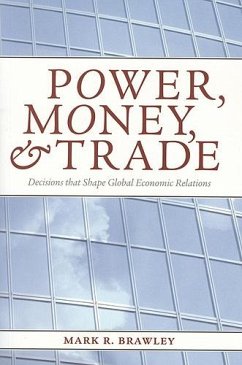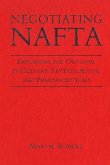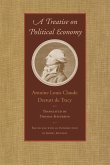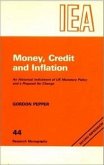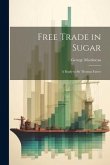- Broschiertes Buch
- Merkliste
- Auf die Merkliste
- Bewerten Bewerten
- Teilen
- Produkt teilen
- Produkterinnerung
- Produkterinnerung
"A very readable and valuable guide to the politics of the world economy." - Charles Lipson, University of Chicago
Andere Kunden interessierten sich auch für
![Negotiating NAFTA Negotiating NAFTA]() Maryse RobertNegotiating NAFTA58,99 €
Maryse RobertNegotiating NAFTA58,99 €![A Treatise on Political Economy A Treatise on Political Economy]() Antoine Louis Claude Destutt De TracyA Treatise on Political Economy16,99 €
Antoine Louis Claude Destutt De TracyA Treatise on Political Economy16,99 €![Free Trade in Money, Or Note-shaving, the Great Cause of Fraud, Poverty and Ruin Free Trade in Money, Or Note-shaving, the Great Cause of Fraud, Poverty and Ruin]() John WhippleFree Trade in Money, Or Note-shaving, the Great Cause of Fraud, Poverty and Ruin16,99 €
John WhippleFree Trade in Money, Or Note-shaving, the Great Cause of Fraud, Poverty and Ruin16,99 €![Money, Credit and Inflation Money, Credit and Inflation]() Gordon PepperMoney, Credit and Inflation17,99 €
Gordon PepperMoney, Credit and Inflation17,99 €![Money, Capital Mobility, and Trade Money, Capital Mobility, and Trade]() Guillermo A. Calvo / Maurice Obstfeld / Rudiger Dornbusch (eds.)Money, Capital Mobility, and Trade12,99 €
Guillermo A. Calvo / Maurice Obstfeld / Rudiger Dornbusch (eds.)Money, Capital Mobility, and Trade12,99 €![The Dignity, Power, and Responsibility of Organized Labor: Labor Day Address, Greensboro, N.C., September 4, 1905 The Dignity, Power, and Responsibility of Organized Labor: Labor Day Address, Greensboro, N.C., September 4, 1905]() The Dignity, Power, and Responsibility of Organized Labor: Labor Day Address, Greensboro, N.C., September 4, 190516,99 €
The Dignity, Power, and Responsibility of Organized Labor: Labor Day Address, Greensboro, N.C., September 4, 190516,99 €![Free Trade in Sugar: A Reply to Sir Thomas Farrer Free Trade in Sugar: A Reply to Sir Thomas Farrer]() George MartineauFree Trade in Sugar: A Reply to Sir Thomas Farrer21,99 €
George MartineauFree Trade in Sugar: A Reply to Sir Thomas Farrer21,99 €-
-
-
"A very readable and valuable guide to the politics of the world economy." - Charles Lipson, University of Chicago
Hinweis: Dieser Artikel kann nur an eine deutsche Lieferadresse ausgeliefert werden.
Hinweis: Dieser Artikel kann nur an eine deutsche Lieferadresse ausgeliefert werden.
Produktdetails
- Produktdetails
- Verlag: University of Toronto Press
- Seitenzahl: 480
- Erscheinungstermin: 1. März 2005
- Englisch
- Abmessung: 218mm x 155mm x 30mm
- Gewicht: 717g
- ISBN-13: 9781551116839
- ISBN-10: 1551116839
- Artikelnr.: 33308951
- Herstellerkennzeichnung
- Libri GmbH
- Europaallee 1
- 36244 Bad Hersfeld
- gpsr@libri.de
- Verlag: University of Toronto Press
- Seitenzahl: 480
- Erscheinungstermin: 1. März 2005
- Englisch
- Abmessung: 218mm x 155mm x 30mm
- Gewicht: 717g
- ISBN-13: 9781551116839
- ISBN-10: 1551116839
- Artikelnr.: 33308951
- Herstellerkennzeichnung
- Libri GmbH
- Europaallee 1
- 36244 Bad Hersfeld
- gpsr@libri.de
By Mark R. Brawley
Acknowledgements
Note to Instructors
Introduction: Themes and Goals
Part I: Approaches to International Relations
1. Competing Theories and the Evolution of Paradigms
2. The Levels of Analysis - System-Level Arguments
3. Theories from the National or Domestic Level
4. Bureaucratic Politics
5. Theories Based on the Idiosyncratic Characteristics of Individuals
6. Ideas as Causal Factors
Part II: The Politicization of International Economic Issues
Introduction: The Interplay of Power and Wealth
7. The Politics of Trade
8. The Politics of International Monetary Relations
9. The Politics of International Investment
Part III: Turning Points in Foreign Economic Policy Behaviour
10. Britain's Repeal of the Corn Laws
11. The Cobden-Chevalier Treaty
12. Sir John A. Macdonald and the Introduction of Canada's National Policy
13. The Failure of Caprivi's New Course: Imperial Germany Defects from the
Free Trade Regime
14. Britain's Refusal to Retaliate on Tariffs, 1906-1911
15. The Reciprocity Election in Canada, 1911
16. Britain's Return to the Gold Standard After World War I
17. The Passage of the Smoot-Hawley Tariff
18. The Creation of the Bretton Woods Monetary Regime
19. South Korea Opts for Export-Oriented-Industrialization
20. The Collapse of the Bretton Woods Monetary Regime
21. Brazil's Responses to the Debt Crisis
22. Canada and the Free Trade Agreement with the U.S.
23. Japan, International Monetary Responsibilities, and Policy
Coordination: The Louvre and Plaza Accords
24. Germany's Role in European Monetary Union
25. Mahathir, Financial Crisis, and Malaysia's Capital Controls
Conclusion: Theories, Evidence, and the Evolution of the International
Political Economy
Glossary
Bibliography
Index
Note to Instructors
Introduction: Themes and Goals
Part I: Approaches to International Relations
1. Competing Theories and the Evolution of Paradigms
2. The Levels of Analysis - System-Level Arguments
3. Theories from the National or Domestic Level
4. Bureaucratic Politics
5. Theories Based on the Idiosyncratic Characteristics of Individuals
6. Ideas as Causal Factors
Part II: The Politicization of International Economic Issues
Introduction: The Interplay of Power and Wealth
7. The Politics of Trade
8. The Politics of International Monetary Relations
9. The Politics of International Investment
Part III: Turning Points in Foreign Economic Policy Behaviour
10. Britain's Repeal of the Corn Laws
11. The Cobden-Chevalier Treaty
12. Sir John A. Macdonald and the Introduction of Canada's National Policy
13. The Failure of Caprivi's New Course: Imperial Germany Defects from the
Free Trade Regime
14. Britain's Refusal to Retaliate on Tariffs, 1906-1911
15. The Reciprocity Election in Canada, 1911
16. Britain's Return to the Gold Standard After World War I
17. The Passage of the Smoot-Hawley Tariff
18. The Creation of the Bretton Woods Monetary Regime
19. South Korea Opts for Export-Oriented-Industrialization
20. The Collapse of the Bretton Woods Monetary Regime
21. Brazil's Responses to the Debt Crisis
22. Canada and the Free Trade Agreement with the U.S.
23. Japan, International Monetary Responsibilities, and Policy
Coordination: The Louvre and Plaza Accords
24. Germany's Role in European Monetary Union
25. Mahathir, Financial Crisis, and Malaysia's Capital Controls
Conclusion: Theories, Evidence, and the Evolution of the International
Political Economy
Glossary
Bibliography
Index
Acknowledgements
Note to Instructors
Introduction: Themes and Goals
Part I: Approaches to International Relations
1. Competing Theories and the Evolution of Paradigms
2. The Levels of Analysis - System-Level Arguments
3. Theories from the National or Domestic Level
4. Bureaucratic Politics
5. Theories Based on the Idiosyncratic Characteristics of Individuals
6. Ideas as Causal Factors
Part II: The Politicization of International Economic Issues
Introduction: The Interplay of Power and Wealth
7. The Politics of Trade
8. The Politics of International Monetary Relations
9. The Politics of International Investment
Part III: Turning Points in Foreign Economic Policy Behaviour
10. Britain's Repeal of the Corn Laws
11. The Cobden-Chevalier Treaty
12. Sir John A. Macdonald and the Introduction of Canada's National Policy
13. The Failure of Caprivi's New Course: Imperial Germany Defects from the
Free Trade Regime
14. Britain's Refusal to Retaliate on Tariffs, 1906-1911
15. The Reciprocity Election in Canada, 1911
16. Britain's Return to the Gold Standard After World War I
17. The Passage of the Smoot-Hawley Tariff
18. The Creation of the Bretton Woods Monetary Regime
19. South Korea Opts for Export-Oriented-Industrialization
20. The Collapse of the Bretton Woods Monetary Regime
21. Brazil's Responses to the Debt Crisis
22. Canada and the Free Trade Agreement with the U.S.
23. Japan, International Monetary Responsibilities, and Policy
Coordination: The Louvre and Plaza Accords
24. Germany's Role in European Monetary Union
25. Mahathir, Financial Crisis, and Malaysia's Capital Controls
Conclusion: Theories, Evidence, and the Evolution of the International
Political Economy
Glossary
Bibliography
Index
Note to Instructors
Introduction: Themes and Goals
Part I: Approaches to International Relations
1. Competing Theories and the Evolution of Paradigms
2. The Levels of Analysis - System-Level Arguments
3. Theories from the National or Domestic Level
4. Bureaucratic Politics
5. Theories Based on the Idiosyncratic Characteristics of Individuals
6. Ideas as Causal Factors
Part II: The Politicization of International Economic Issues
Introduction: The Interplay of Power and Wealth
7. The Politics of Trade
8. The Politics of International Monetary Relations
9. The Politics of International Investment
Part III: Turning Points in Foreign Economic Policy Behaviour
10. Britain's Repeal of the Corn Laws
11. The Cobden-Chevalier Treaty
12. Sir John A. Macdonald and the Introduction of Canada's National Policy
13. The Failure of Caprivi's New Course: Imperial Germany Defects from the
Free Trade Regime
14. Britain's Refusal to Retaliate on Tariffs, 1906-1911
15. The Reciprocity Election in Canada, 1911
16. Britain's Return to the Gold Standard After World War I
17. The Passage of the Smoot-Hawley Tariff
18. The Creation of the Bretton Woods Monetary Regime
19. South Korea Opts for Export-Oriented-Industrialization
20. The Collapse of the Bretton Woods Monetary Regime
21. Brazil's Responses to the Debt Crisis
22. Canada and the Free Trade Agreement with the U.S.
23. Japan, International Monetary Responsibilities, and Policy
Coordination: The Louvre and Plaza Accords
24. Germany's Role in European Monetary Union
25. Mahathir, Financial Crisis, and Malaysia's Capital Controls
Conclusion: Theories, Evidence, and the Evolution of the International
Political Economy
Glossary
Bibliography
Index

